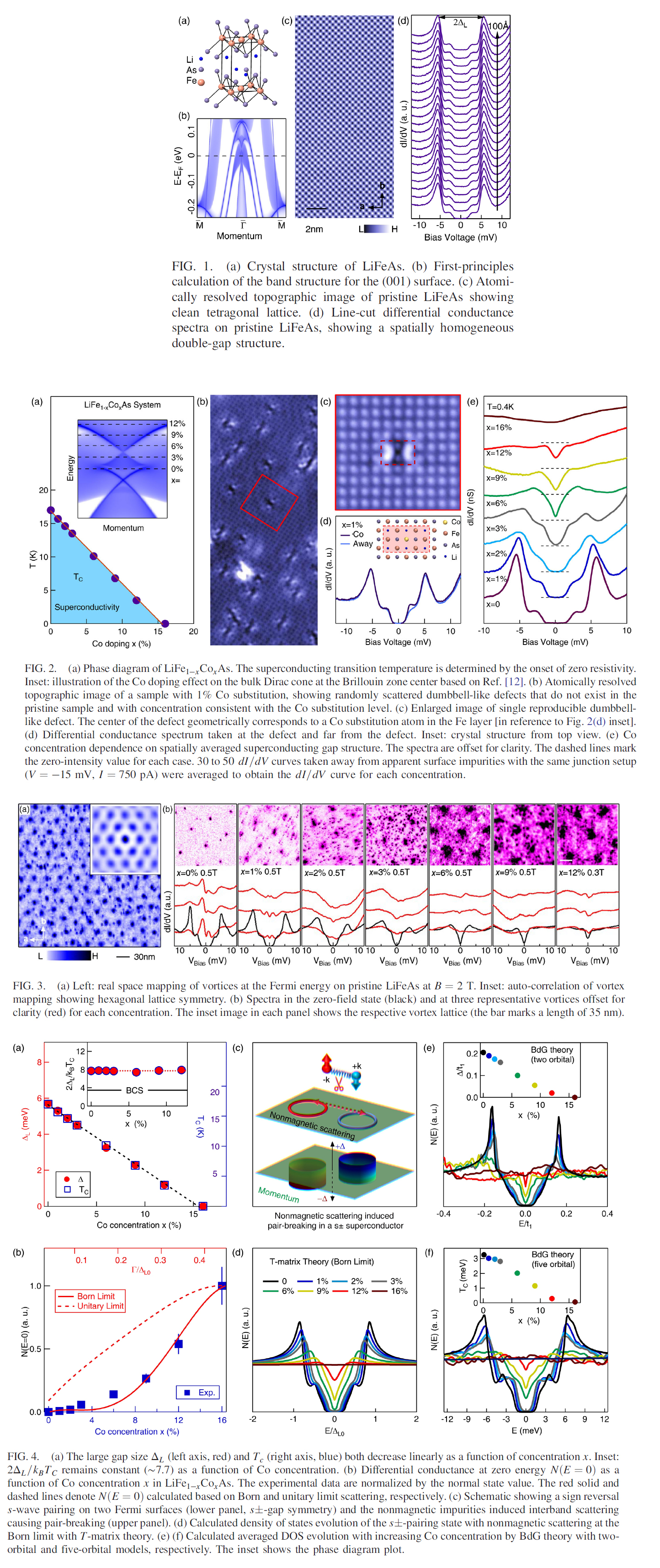在LiFe1-xCoxAs超导体系中观察到量子相变
(Quantum Phase Transition of Correlated Iron-Based Superconductivity in LiFe1-xCoxAs )
J. X. Yin, S. S. Zhang, G. Y. Dai, Y. Y. Zhao, A. Kreisel, G. Macam, X. X. Wu, H. Miao, Z. Q. Huang, J. H. J. Martiny, B. M. Andersen, N. Shumiya, D. Multer, M. Litskevich, Z. J. Cheng, X. Yang, T. A. Cochran, G. Q. Chang, I. Belopolski, L. Y. Xing, X. C. Wang, Y. Gao, F. C. Chuang, H. Lin, Z. Q. Wang, C. Q. Jin, Y. Bang, M. Z. Hasan
Phys. Rev. Lett. 123, 217004 (2019)
The interplay between unconventional Cooper pairing and quantum states associated with atomic scale defects is a frontier of research with many open questions. So far, only a few of the high-temperature superconductors allow this intricate physics to be studied in a widely tunable way. We use scanning tunneling microscopy to image the electronic impact of Co atoms on the ground state of the LiFe1-xCoxAs system. We observe that impurities progressively suppress the global superconducting gap and introduce low energy states near the gap edge, with the superconductivity remaining in the strong-coupling limit. Unexpectedly, the fully opened gap evolves into a nodal state before the Cooper pair coherence is fully destroyed. Our systematic theoretical analysis shows that these new observations can be quantitatively understood by the nonmagnetic Born-limit scattering effect in an s-wave superconductor, unveiling the driving force of the superconductor to metal quantum phase transition.
